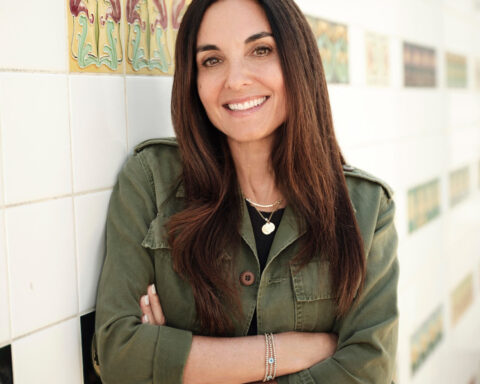When Sheila first suggested to her husband Jim that they go to an event for monogamous couples, he reluctantly agreed, hoping that she could enjoy her sense of adventure. But neither of them expected the strong desire to explore even further after becoming friends with another nice couple there.
As middle-aged parents of two teenage children stuck in an affectionless rut, Jim and Sheila saw their family-oriented responsibilities were slowly suffocating the carefree pair who had met in a bar almost 20 years ago. Because they wanted to get away, they went to a polyamorous retreat that promised "sexy fun." That is where the pair connected with Jessica and Edward, who were from different cultures. Even though it was awkward, they found a common ground-their age.
When they all gathered privately, sparks flew between Sheila and Edward despite Jim’s presence. While Jim and Jessica exchanged light intimacy, Sheila experienced long-forgotten sexual desire and emotional intensity with Edward’s passionate embrace. For Sheila, the encounter proved positively electrifying, amplifying neglected aspects of her core identity and womanhood.
But Jim was cold when he saw that his wife was clearly excited about being with another man. He may have felt the growing risks growing with each moment as Sheila became more interested in exploring the idea of ethical non-monogamy. She welcomed the experience with open arms and confidence, even if it was only for a short period of time.
Sheila insisted that ethical liaisons would ultimately strengthen their marital commitment rather than detract from it. With proper boundaries in place, she sees extramarital situations as a fun way to spice up an old relationship, not as betraying her partner. Her main goal was still to protect her family while giving in to urges that had been dormant for years of raising children at home.
Mental health experts contend such desire often stems from discontent, which couples must address, not excuse. Responsible resolution demands renewed dedication to reinvigorating emotional intimacy within monogamy. Sheila probably projected jealous energy onto a made-up, carefree alternate life that hides changes that require actual dedication.
Even though ethical non-monogamy raises many questions, Jim seemed to be most worried about what it meant for his identity. He was having difficulty figuring out a solution to "their marriage being dull and without love." It's not as easy to fix the damage done to men's self-image and the sense of security it once provided.
Sheila, on the other hand, took action instead of running away from loving home life. She says that ethical and external connections could boost their confidence and attractiveness. Her reasoning is that surface thrills don't have to hurt the depth of marriage; instead, they should balance out the confidence boosts that are missing because both are tired.
Relationship experts emphasize that the rewards of mutual understanding and compromise are much greater than those of reactive behavior. Fantasies about the possibility of greater fulfillment with someone else frequently signal unaddressed needs in the current partnership. These may be better met by looking inward, communicating openly, and striving to support each other with insight and care.
As perspectives on ethical non-monogamy continue to evolve, the complex realities faced come into focus. When Jim first learned of Sheila's interest in opening up their marriage, he tried to approach it with empathy - understanding her desire for self-discovery and fuller engagement with life's passions. However, over time, his questions and unease grew.
Jim worried not only about himself but also the welfare of their children, who might feel anxious or unstable if exposed, even indirectly, to disruption in their parents' bond. He was also concerned that new relationships, exciting at first, might ultimately erode the history, trust, and communication so vital to committed partnerships like theirs when midlife settles in.
Though Jim hesitated to dictate terms to Sheila, he just wanted to be sure they were both comfortable with the new relationship pattern before they committed. While he was safe in his marriage, he wondered whether they could reawaken their connection by being honest with each other. Jim framed his hesitation as a responsible worry about his family's environmental health rather than an impediment. Doing so was also an attempt to foster an understanding between themselves and Sheila, who he believed would place equal value on free will and self-control.
*Names have been changed

 Trump has begun another trade war. Here's a timeline of how we got here
Trump has begun another trade war. Here's a timeline of how we got here
 Canada's leader laments lost friendship with US in town that sheltered stranded Americans after 9/11
Canada's leader laments lost friendship with US in town that sheltered stranded Americans after 9/11
 Chinese EV giant BYD's fourth-quarter profit leaps 73%
Chinese EV giant BYD's fourth-quarter profit leaps 73%
 You're an American in another land? Prepare to talk about the why and how of Trump 2.0
You're an American in another land? Prepare to talk about the why and how of Trump 2.0
 Chalk talk: Star power, top teams and No. 5 seeds headline the women's March Madness Sweet 16
Chalk talk: Star power, top teams and No. 5 seeds headline the women's March Madness Sweet 16
 Purdue returns to Sweet 16 with 76-62 win over McNeese in March Madness
Purdue returns to Sweet 16 with 76-62 win over McNeese in March Madness








